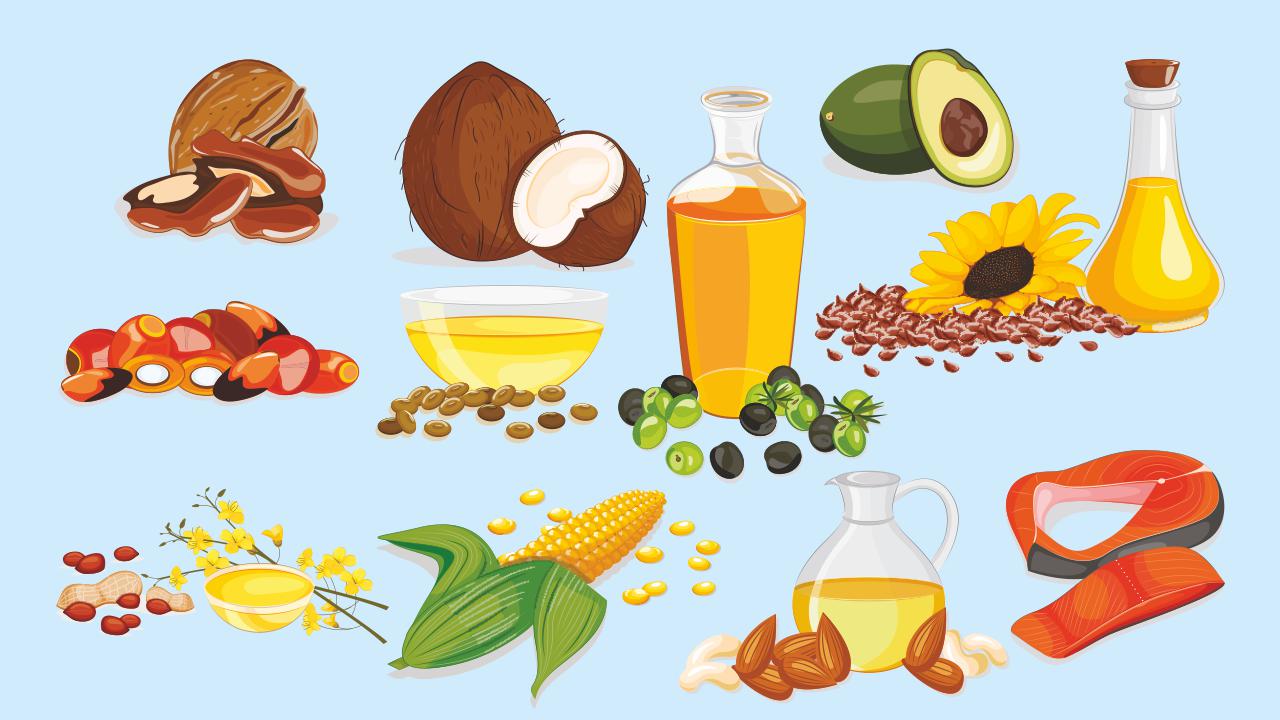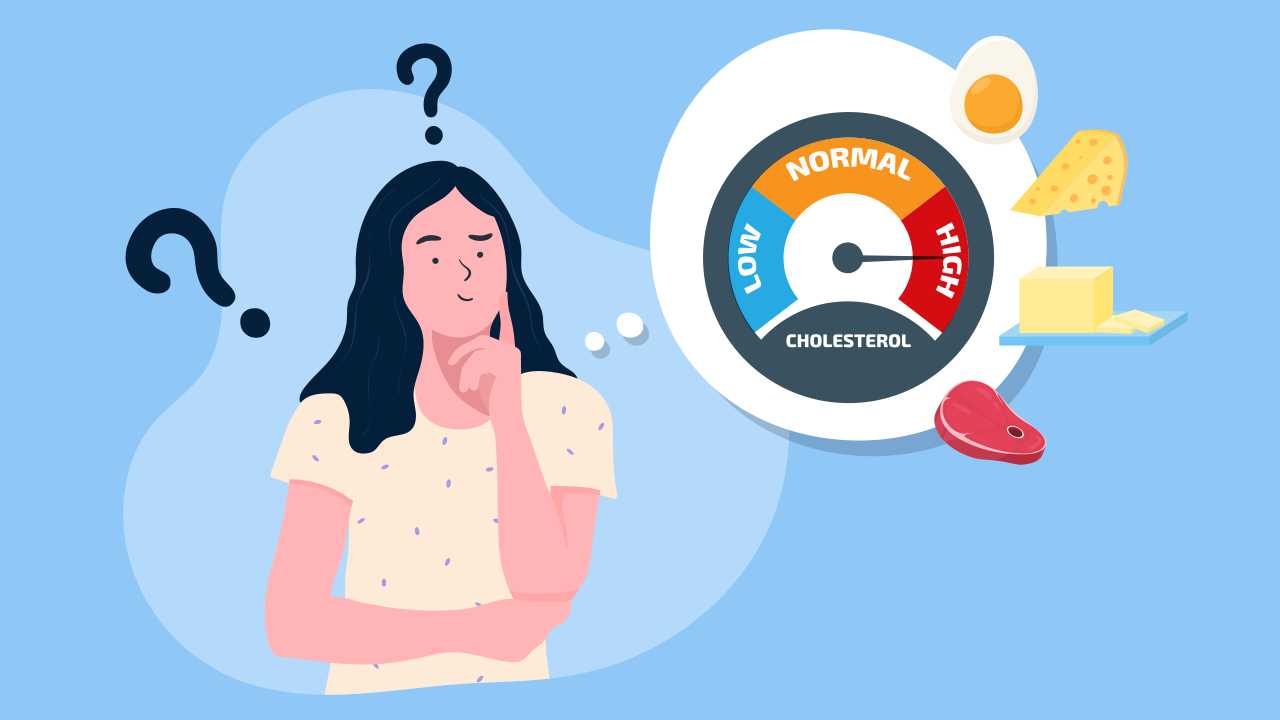
Fats: Why Are They an Essential Part of Your Diet

Fats are one of the three macronutrients that make up a healthy diet. They are required by your body to function daily, where the type and amount of fat you eat determine how they benefit your body. Let’s find out more about what makes fats essential for you, and what are the various sources of fat.
Why are fats essential?
Fats play critical roles in our bodies. Let’s talk about some of their important functions.
Insulation: Fats help in insulating as well as protecting our vital organs from sudden impact or external shock such as injuries. They keep you warm and act as an extra layer of clothing underneath your skin.
Micronutrient absorption: Certain vitamins (A, D, E, and K) are fat-soluble — they only get absorbed in the intestine when you intake fat in your diet. So, avoiding fat won’t work in your favor, and may lead to micronutrient deficiencies.
Concentrated energy source: 1g of fat provides 9kcal energy — that’s nearly double the energy provided by carbohydrates. Glucose is the preferred source of energy in the body. But whenever there’s a requirement for additional energy, fat stored in fat tissues gets released in the form of fatty acids, which are then used for various bodily functions.
Also read: Macronutrients: What Are They? Why Do You Need Them?
Types of fats
There are three major classifications of fats — saturated, unsaturated, and trans fats. Most fat-containing foods have a combination of these types, with one usually being present in a more dominant form than the others. Sources of fat include plant and animal sources. Dietary fats are found in plant sources (soybean, olive, corn, canola, sunflower, nuts, and seeds) and animal sources (butter, full-fat milk, meats, poultry, and eggs).
Saturated fats
These fats contain a higher number of hydrogen atoms, which cling to each other and make saturated fats dense and difficult to break. They are less vulnerable to rancidity (oxidative change in fat composition when exposed to air and moisture) and have a higher shelf-life. When food becomes rancid, its taste and odor change.
Moderate consumption of these fats — less than 10% of your total daily calorie intake — is recommended by the National Institute of Nutrition (NIN), India. Overconsumption (>10% of daily calorie intake) may lead cholesterol to build up in the arteries over time and can be harmful to your heart.
Sources of saturated fat: Cheese, butter, whole milk, tropical oils, coconut oil, animal fat (lard, ghee), red meat (beef, mutton), among other foods. Many packaged foods also contain saturated fats.
Unsaturated fats
Unsaturated fats have a lesser number of hydrogen atoms and are less dense. They have less stability, are more likely to get rancid, and therefore, have a lower shelf-life. These fats easily undergo changes in taste and odor on exposure to air and moisture. Unsaturated fats should be a part of your daily diet.
They are further classified into monounsaturated and polyunsaturated fats, depending on their unique chemical structures.
Monounsaturated fatty acids (MUFA): Known to be good for your heart, MUFA contains one double bond in the fatty acid chain, hence the name. Research suggests that MUFAs may help lower LDL or “bad” cholesterol levels in the blood.
Sources: Vegetable oils (soybean, peanut, and olive), nuts (almonds, cashews), seeds (sunflower, flax), avocado.
Polyunsaturated fatty acids (PUFA): They have more than one double bond in the fatty acid chains. They may help lower blood pressure and may reduce inflammation. Omega-3 and omega-6 are types of PUFA, which are responsible for a healthy brain, heart, good skin, and hair. According to the NIN, omega-3 must contribute 0.5-1% of total calories and omega-6 must contribute 4-10% of total daily calories. They are also what’s known as essential fatty acids (EFA), and can not be produced by the body on its own.
Sources: Green leafy vegetables, soybean oil, flax seeds, spirulina, fatty fishes like salmon, mackerel, shellfish.
Trans fats
Most restaurants and fast food joints use trans fats for deep frying. These are vegetable oils processed using hydrogen, which converts them into a solid form called trans fats or partially hydrogenated fats. They have a long shelf-life and enhance the taste and texture of the food they are added to. Consuming too much trans fat may increase LDL cholesterol and reduce good or HDL cholesterol, which may set the body up for various cardiovascular problems. The intake of trans fats needs to be minimized and constitute less than 1% of total calories consumed in a day.
Sources: Fried foods like doughnuts and french fries, baked goods like cakes, pastries, and cookies, processed snacks such as chips.

How much fat should you consume?
According to the Institute of Medicine (IOM), an adult needs to consume 20% to 35% of daily calories from fat. Individuals, who are into intense physical activity, or pregnant women may need to consume fat in the higher end of this range.
The NIN recommends the following amounts of fat in your daily caloric intake:
- Saturated fat <10% of total calories
- PUFA: Omega-3 = 0.5%-1% of total calories; Omega-6 = 4%-10% of total calories
- Trans fat <1% of total calories
- MUFA = Total fat-(Saturated fat + PUFA + trans fat)
As you see, unlike popular belief, fats are not all bad news. In fact, some of them play a crucial role in your day-to-day functioning. It’s wise, therefore, to stick to a balanced diet that supply you with healthy fats in required quantities.
References
1. Monounsaturated Fat. American Heart Association. https://www.heart.org/en/healthy-living/healthy-eating/eat-smart/fats/monounsaturated-fats (accessed Feb 19, 2021).
2. Kaur N, Chugh V, Gupta AK. Essential fatty acids as functional components of foods- a review. J Food Sci Technol 2014; 51: 2289–303.
3. Recommended Dietary Allowances and Estimated Average Requirements. Nutrient Requirements for Indians – 2020. Indian Council of Medical Research, National Institute of Nutrition, 2020.
4. Kris-Etherton PM, Pearson TA, Wan Y, et al. High-monounsaturated fatty acid diets lower both plasma cholesterol and triacylglycerol concentrations. Am J Clin Nutr 1999; 70: 1009–15.














